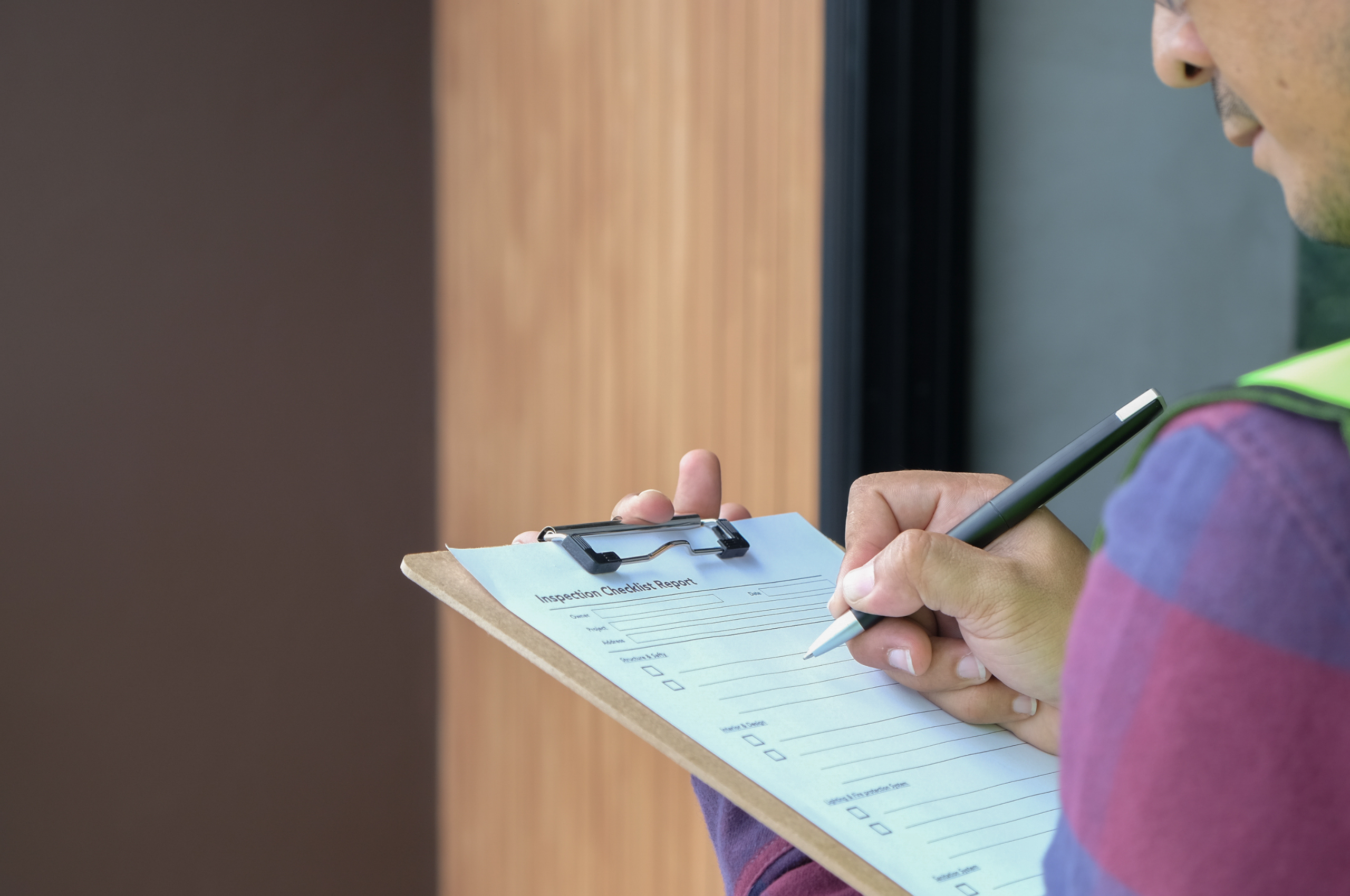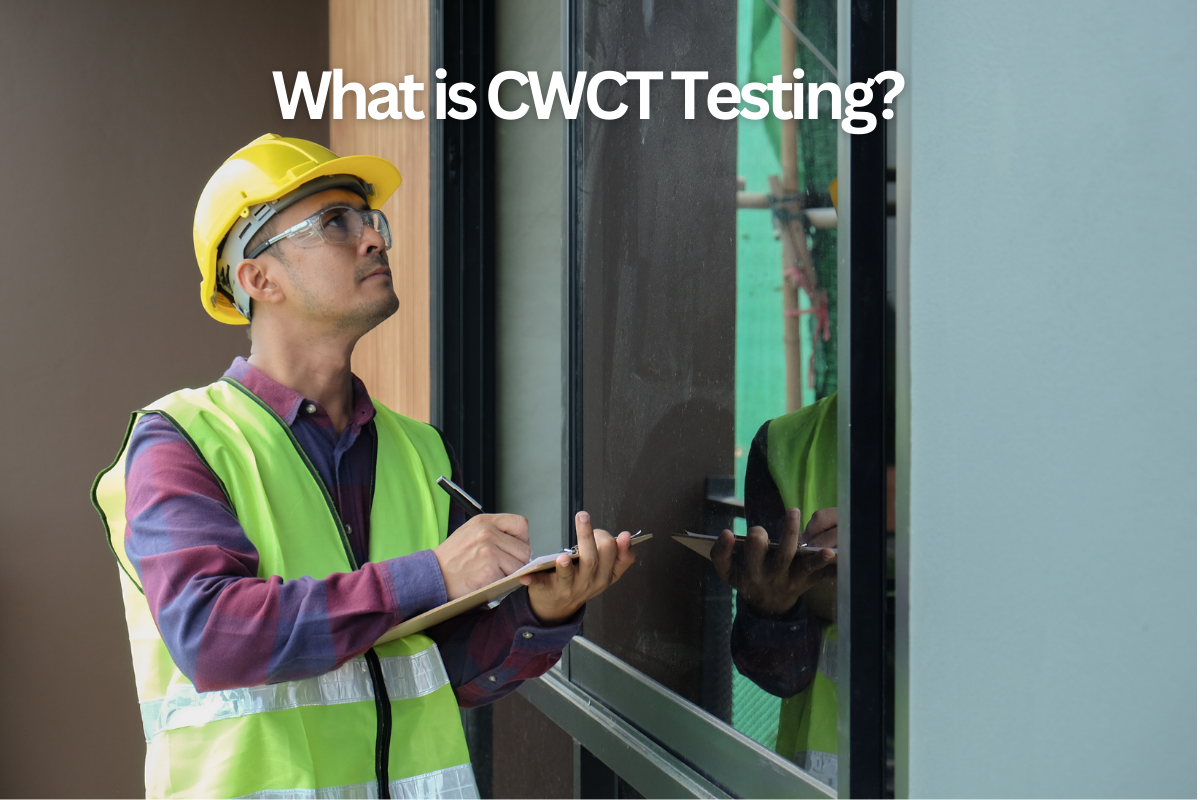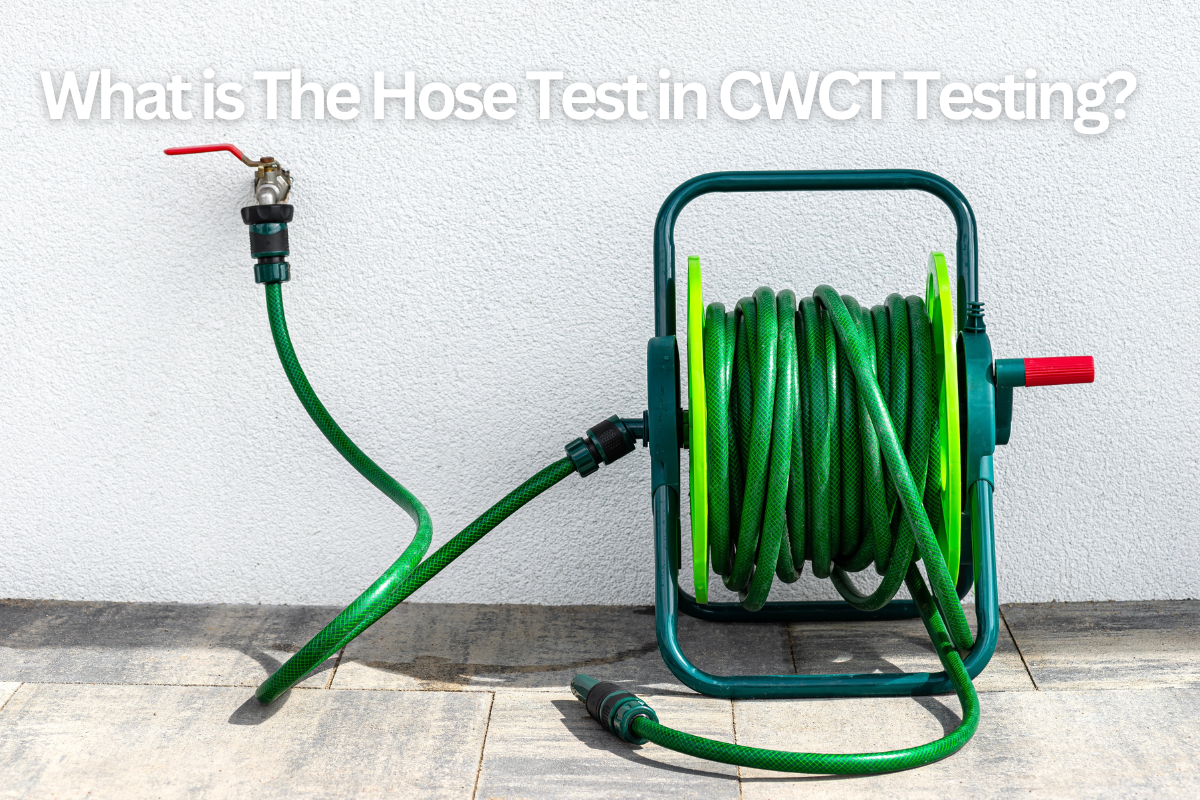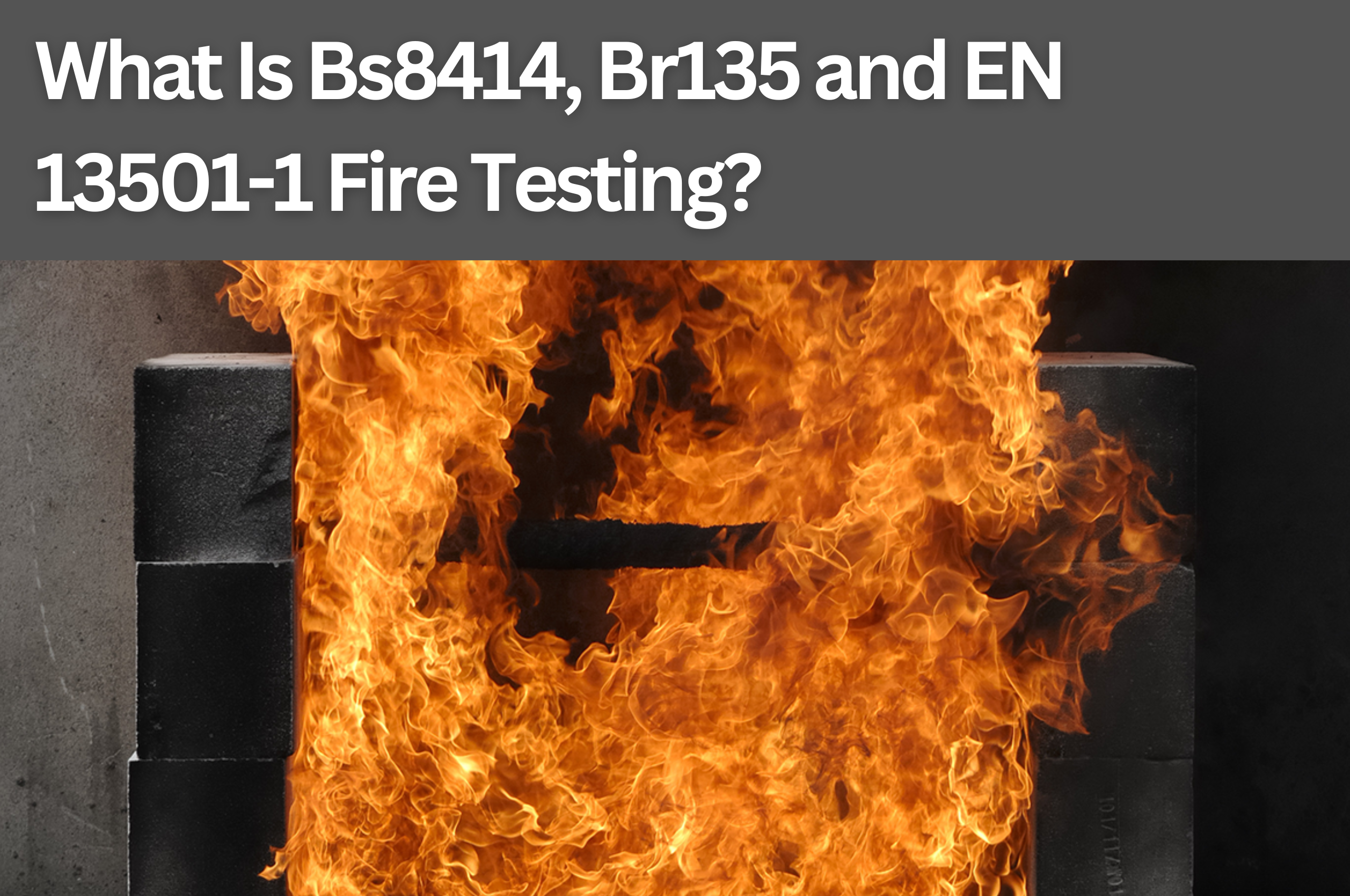Finish Facades Knowledge Base
What is CWCT Testing and What Does it Involve?

Are you wondering what CWCT testing is and why it's important ?
Well, let us break it down for you.
Contrary to popular belief, CWCT Testing not only determines water tightness but also analyses the performance of the glazing and cladding, helping to ensure they meet the expected standards for your facade or rainscreen cladding system. Though CWCT doesn’t guarantee the overall performance of the building, it provides reassurance that the glazing and cladding will perform as intended.
So, let's dive into this article and explore the world of CWCT testing together.

What is CWCT Testing?
CWCT Testing is crucial in assessing the safety and performance of building envelopes. It involves subjecting façades or cladding systems to various levels of water penetration testing, air permeability testing, and impact resistance testing to determine their serviceability. CWCT testing ensures that these building elements can withstand a range of typical UK weather conditions.
By undergoing independent CWCT testing at accredited laboratories, fabricators and installers demonstrate that they have produced robust envelope solutions. This guarantees the performance and quality of products like terracotta and brick cladding systems.
CWCT standards cover water tightness, wind resistance, impact resistance, and airtightness. They consider factors such as maximum air pressure reached or damage after an impact. The 'Standard for systemised building envelopes', which is part of the National Building Specification, provides guidance for specifying individual project requirements through a checklist covering internal and external environment considerations, air permeability, thermal performance, access and safety measures, as well as design life expectations. It ensures appropriate standards for the finishing and appearance and ensures you’re complying with UK Building Regulations.
The National Building Specification (NBS) and National House Building Council (NHBC) standards are based on the CWCT 'Standard for systemised building envelopes'. Relying solely on British Standards without a comprehensive specification is insufficient.
CWCT Testing plays an essential role in ensuring the safety and performance of building envelopes by subjecting them to rigorous assessments under different climatic conditions. Adhering to CWCT testing standards demonstrates the quality of products. These standards also provide a framework for specifying building envelopes that meet project-specific requirements.
Here's a short video of our team doing CWCT Testing at the Vinci Technology Centre UK in 2020.
What are the Key Components of CWCT Testing?
CWCT Testing consists of a few major components, the main being wind load testing, dynamic water tightness testing, and safety wind load testing. However, other tests include thermal, moisture and acoustic performance testing, fire testing, and impact testing. The tests are specified in the “Standard for systemised building envelopes”.
In wind load testing, we subject the cladding to positive and negative pressure differentials to ensure it can withstand the design wind load. Serviceability wind load testing assesses the deflection of the cladding system or component to prevent failures during extreme weather conditions. Safety wind load testing tests flexible cladding systems for permanent deformation and structural failure.
Lastly, dynamic water tightness testing evaluates the ability of the cladding to prevent water penetration at specified pressures. These components are crucial in ensuring the durability and performance of rainscreen systems.
Now, let’s discuss what each of these components mean in a bit more detail.
What is Water Tightness Testing?
Water tightness is a crucial aspect of CWCT Testing. It refers to the ability of a facade system (meaning the external cladding and covering of a building) to prevent water from penetrating into the interior. Achieving water tightness is essential as it ensures that the building remains dry and protected from potential damage caused by leaks.
Several factors can influence the water tightness of a facade system. One key factor is the design and construction of the system itself. The choice of materials, joint detailing, and overall workmanship play significant roles in determining how effectively water can be kept out.
Another factor influencing water tightness is external conditions such as wind-driven rain or extreme weather events. These conditions put additional stress on the facade system and may increase the risk of water penetration if not properly addressed during design and installation.
In the next section, we’ll discuss the Hose Test, the Spray Bar Test and the Cabinet Test, which are all 3 types of water tests that are recognised by The Centre for Window and Cladding Technology (CWCT).
What are the Different Types of Water Tests in CWCT Testing?
To evaluate the water tightness of a facade system, various types of water testing are conducted as part of CWCT Testing. These tests simulate real-life scenarios and assess how well the facade system performs under different conditions. The main 3 water tests are The Hose Test, The Spraybar Test and the Cabinet Test.

What is The Hose Test in CWCT Testing?
The Hose Test is used for sealed (or “closed”) joint systems where water is sprayed from a single nozzle at a set distance (usually about 250mm) and moved over controlled time intervals, for a period of about half an hour. This test follows specific standards defined by CWCT regarding nozzle type, pressure, flow rate, distance from facade, and timing.
What is the Spraybar Test in CWCT Testing?
For operable components or open jointed systems, the Spraybar Test is employed. It involves mounting a horizontal bar with nozzles spaced at 400mm intervals onto the top of the test area. The flow rate is calculated based on the number of nozzles, and this test always runs for 30 minutes.
What is the Cabinet Test in CWCT Testing?
In cases where an internal cabinet can be built, Cabinet Testing offers an alternative method for evaluating water tightness. A spray bar is positioned externally while negative pressure is applied within the cabinet. Over time, increasing negative pressure allows for assessment at different levels until reaching maximum pressure.
Regardless of which type of test is used - Hose Test, Spraybar Test or Cabinet Test - the objective remains the same: to apply a controlled amount of water to the facade while inspecting the interior for any signs of leakage. By conducting these tests, CWCT ensures that facade systems meet required standards and provide adequate protection against water penetration.
What is Wind Load Testing (Wind Resistance Testing)?
Wind load testing is a crucial part of CWCT Testing. It involves applying positive pressure to simulate wind blowing towards the exterior of the building and negative pressure to simulate suction from the wind blowing away from the exterior.
The purpose is to ensure that the cladding system can withstand extreme wind conditions without failure or compromising its weathertightness.
During the test, we monitor the deflection of the components and compare it against predetermined limits. Excessive deflection can lead to structural damage and water leakage, which can result in discomfort or even safety hazards for occupants.
Wind load testing is important because it allows us to assess the performance and safety of cladding systems under realistic wind conditions. By conducting these tests, we can identify any weaknesses or potential issues during the design and construction phase of a building, ensuring that buildings are durable and secure against high winds.
What is Safety Wind Load Testing?
Safety wind load testing is a crucial process that involves subjecting cladding systems to extreme wind loads in order to determine if they can withstand the designated design wind load. This test is typically carried out on flexible cladding systems where permanent deformation and stress limits may be exceeded. The objective of this test is to ensure that the cladding has a factor of safety beyond the prescribed design wind load, which is usually 3600 pascals.
During the safety wind load test, the cladding sample is subjected to positive and negative applications of 50% above the design wind load. The aim is to assess whether excessive residual deformation in the cladding system falls within expected limits during the test, and to identify any issues with structural failure. Fixings play a crucial role in ensuring the cladding's stability during high winds, so it’s crucial that they pass this test to comply with building standards.
These tests are performed because they are directly related to health and safety concerns. By conducting these tests, we can ensure that cladding systems have sufficient strength and integrity to withstand severe weather conditions without compromising human safety. Therefore, it's essential to perform these tests using full wind loads and even go beyond for an added margin of safety.
How Important is CWCT Testing?
CWCT Testing plays a crucial role in ensuring the quality and performance of facades. It is vital for both the building industry professionals and customers who want to have confidence in their cladding products.
One of the main reasons why CWCT Testing is important is because it helps to identify possible causes of facade failure - usually related to water penetration issues - and minimise them. By subjecting cladding systems to rigorous testing, any potential weaknesses or vulnerabilities can be identified and addressed before installation. This significantly reduces the risk of costly repairs or replacements due to water penetration issues.
Furthermore, CWCT Testing provides assurance that a cladding product will meet the expected performance levels. This is especially important when it comes to energy efficiency and maintenance requirements. A well-tested system will contribute to a more efficient building envelope, resulting in reduced maintenance costs over time.
In addition, high-quality CWCT tested systems are designed to meet specific regulations outlined by CWCT's 'Standard for systemised building envelopes' specifications’. These regulations ensure that facades are built to a certain standard and maintain consistency across the industry. Compliance with these regulations not only ensures safety but also promotes trust between suppliers, contractors, and customers.
Overall, CWCT Testing is of utmost importance in facades as it provides peace of mind regarding the quality, performance, and compliance of cladding systems. It helps avoid facade failure due to water leaks while minimising long-term maintenance costs.
By only investing in CWCT tested products, both professionals and customers can be confident that their buildings will perform as expected and meet industry standards.
Get Premium Rainscreen Facade Systems With Finish Facades
Here at Finish Facades, we always choose the finest materials for your project. That's why our cladding systems undergo thorough CWCT testing to ensure their quality. Our facades are of the highest standard, giving you peace of mind. Whether it's our deluxe Pinnacle rainscreen cladding system or the versatile and universal Viso flat panel rainscreen cladding system, we have options that suit your needs.
If you want to learn more about the Finish Facades process, don't hesitate to reach out to our team with any questions. We're here to assist you and provide all the information you need.
Need more information?
To see how Finish Facades could support your next project - simply call us, or use the form below.

